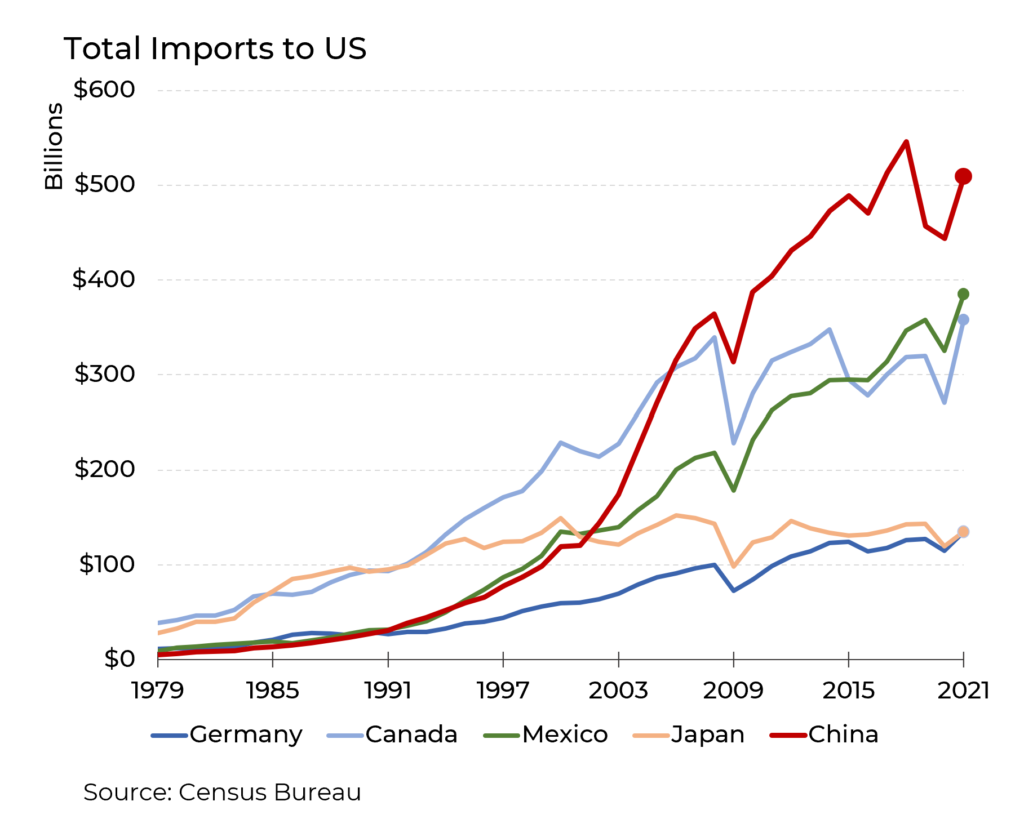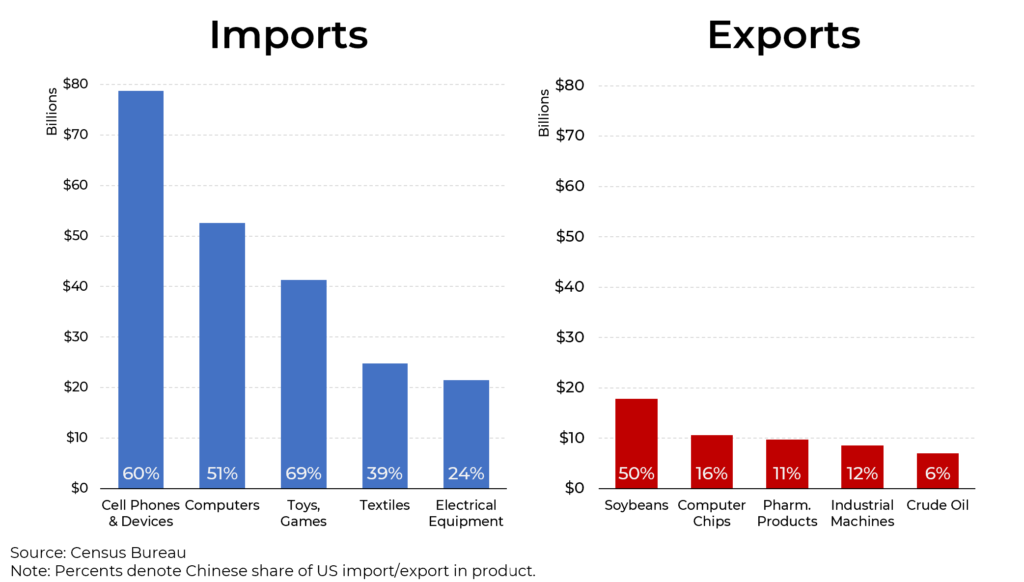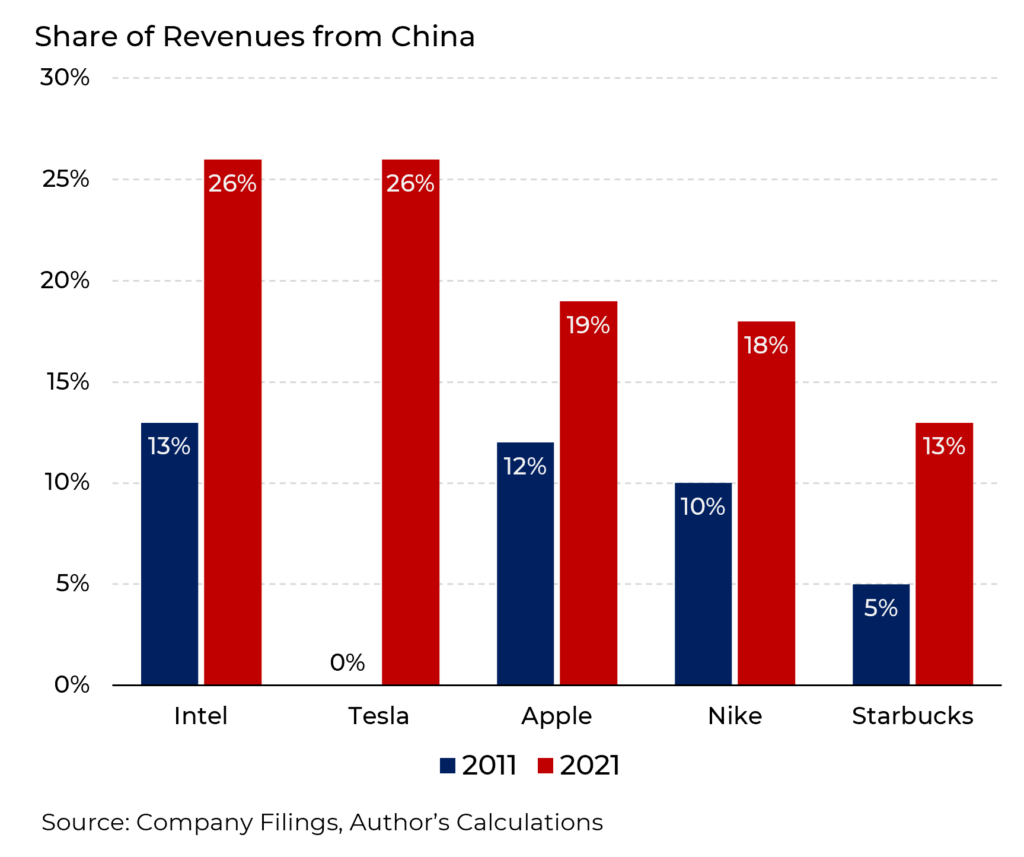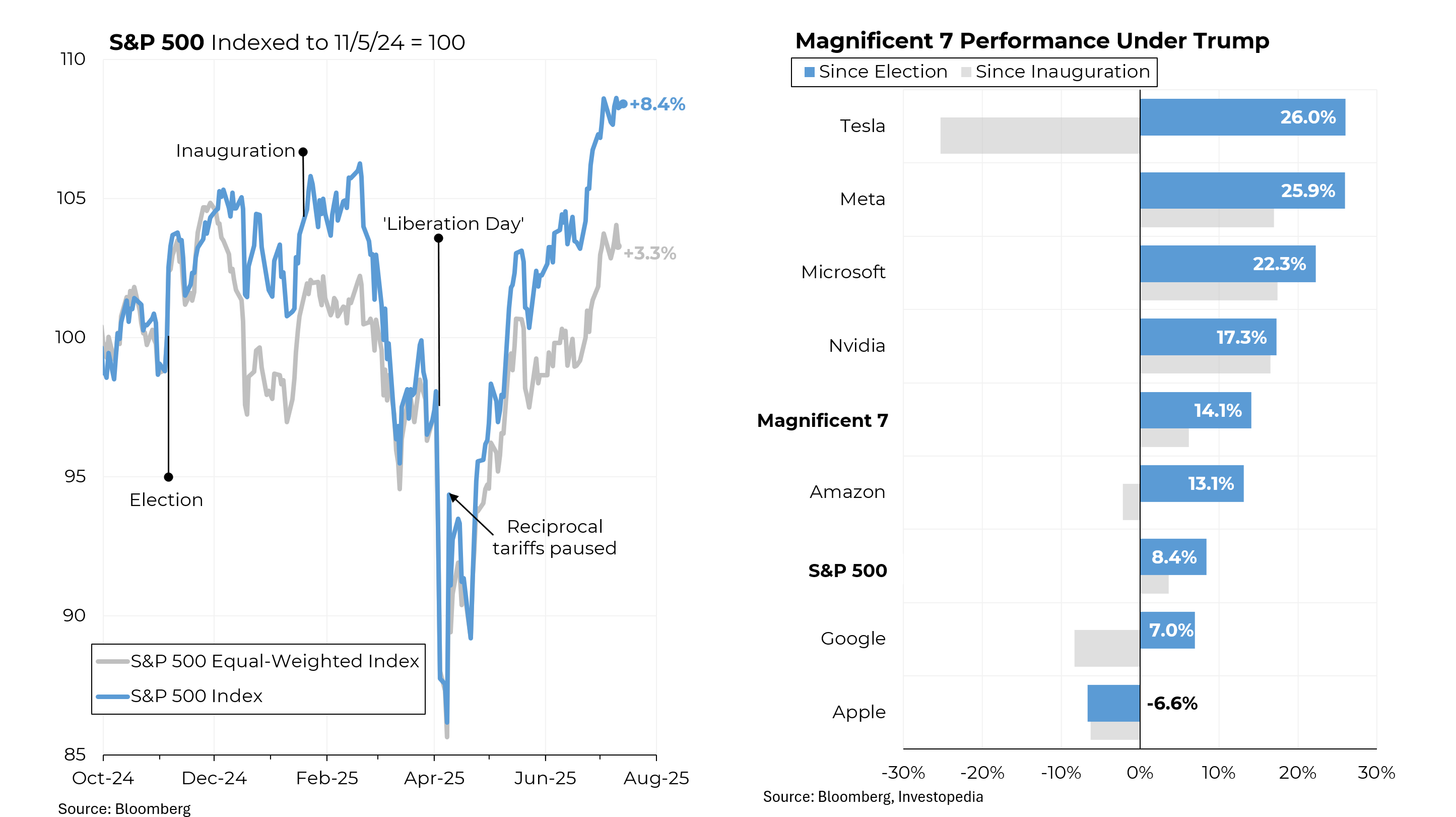China has been hinting at sending military aid to Russia and President Biden has been responding by threatening “serious sanctions” if China did so. But, realistically, it’s not clear what we would – or could – do to punish China, given how intertwined our two economies are.
China’s rise as our largest trading partner has been stratospheric. Two decades ago, Canada was the biggest source of imports into America. Now, even after NAFTA, Trump’s “United States-Mexico-Canada Agreement,” and the rise of Mexico as an important partner, China sits on top, the source of 18% of all our imports – more than 4 times what it was in 2001. Putting it another way, 16% of China’s exports go to the United States. In short, we are highly dependent on China.
What are our largest categories of imports from China? Not surprisingly, cellphones and computers top the list, amounting not only to about $130 billion of value, but 60% and 51% respectively of all of our imports of these products. After that comes toys, textiles and electrical equipment. Importantly, as we don’t make material amounts of many of those things (like toys, cellphones, etc.) in America anymore, Chinese imports constitute a substantial majority of American purchases of these goods.
As a point of comparison, our imports from China dwarf our exports to that country. Soybeans constitute our largest export, and roughly 50% of all our soybean sales overseas go to China. Yes, we do sell computer chips to China, but they are not the most powerful semiconductors, the sales of which to China have been banned.
Even though we don’t export many finished goods to China, it is still a very important – and growing – market for American products. Over the past decade, the share of Intel’s sales that have gone to China has doubled, from 13% to 26%. Tesla, which didn’t sell any cars in China 10 years ago, now makes 26% of its revenues there. China is also an important market for Apple, Nike, and Starbucks.
With China growing faster than most developed countries, its importance as a market will only increase. By 2030, according to Morgan Stanley, private consumption in China is expected to roughly double, to $12.7 trillion – about the same as Americans currently spend.








